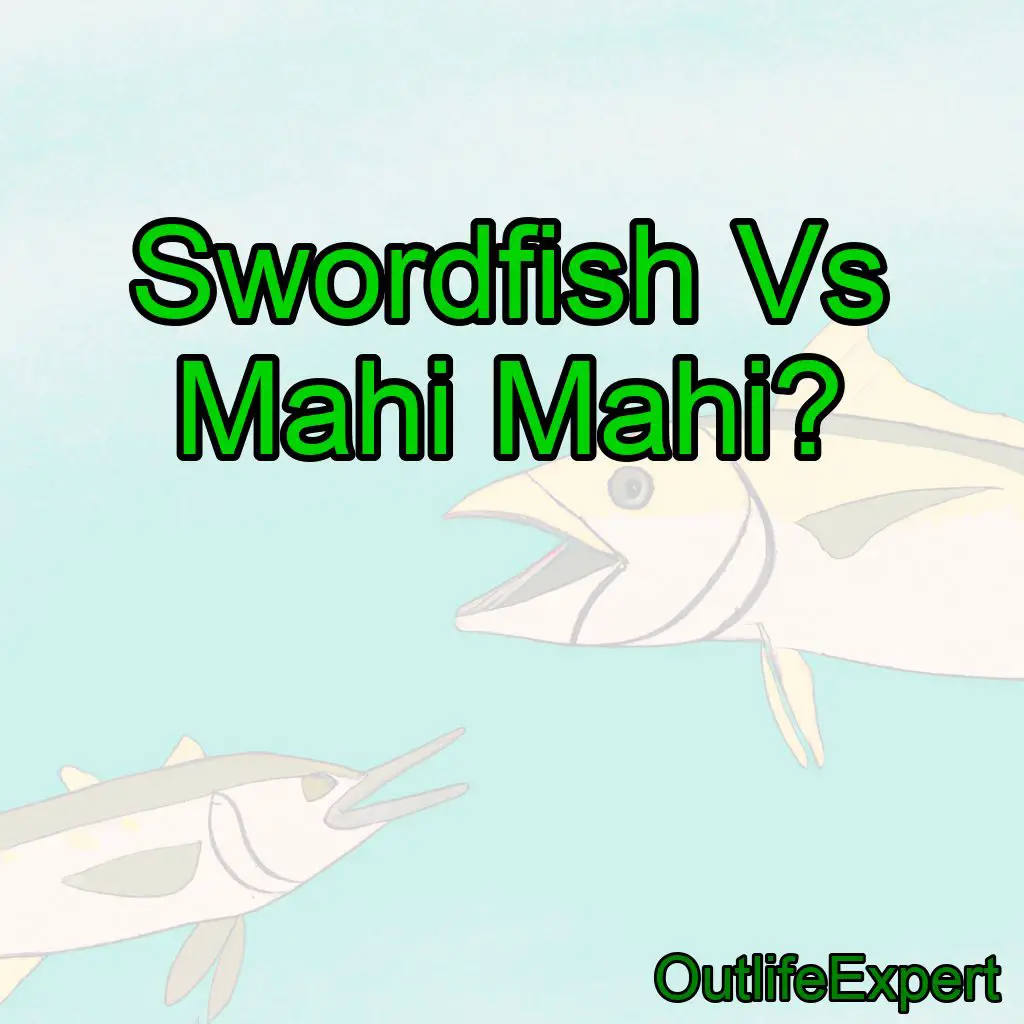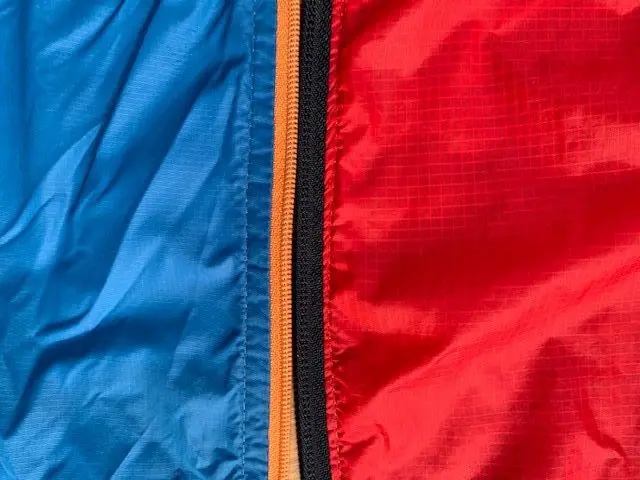Swordfish and mahi mahi are two popular fish species frequently enjoyed by seafood enthusiasts. While they may look similar, there are a number of key differences between the two.
In this blog post, we will explore the differences between swordfish and mahi mahi, covering everything from their physical appearance and habitat to their culinary uses and nutritional content. As a marine biologist, I have had the opportunity to study and observe both of these fascinating species in their natural environment, and I am excited to share my knowledge and personal experiences with you.
Contents
Physical Appearance
Swordfish
Swordfish, scientifically known as Xiphias gladius, are large, predatory fish characterized by their long, flat bill, which resembles a sword. This distinct feature is used to slash through schools of fish, stunning or injuring their prey. They have a sleek, streamlined body, typically dark blue or purple on the dorsal side (top) and lighter, silver-white on the ventral side (bottom). Adult swordfish can grow up to 15 feet in length and weigh over 1,000 pounds.
Mahi Mahi
Mahi mahi, also known as dolphinfish or Coryphaena hippurus, are smaller and more colorful than swordfish. They have a distinctive, blunt head and a long, slender body. Their dorsal fin runs almost the entire length of their body, and they possess a forked tail fin. Mahi mahi can display a range of vibrant colors, including blues, greens, and yellows, with the ability to change colors rapidly when excited or stressed. Adults generally reach lengths of up to 7 feet and weigh around 90 pounds.
Habitat and Distribution

Swordfish
Swordfish are highly migratory and can be found throughout the world’s oceans, primarily in temperate and tropical waters. They are known to inhabit depths of up to 2,000 feet during the day, but will come closer to the surface at night to feed. Swordfish prefer water temperatures between 64°F and 71°F and are often found near oceanic fronts, where warm and cold water currents meet. These areas provide an abundance of prey for the swordfish.
Mahi Mahi
Mahi mahi are also migratory, but their distribution is limited to tropical and subtropical regions of the Atlantic, Pacific, and Indian Oceans. They are commonly found in surface waters, typically not deeper than 280 feet. Mahi mahi prefer water temperatures between 68°F and 83°F and are often found near floating objects or debris, which provide cover for their prey.
Feeding Habits
Swordfish
Swordfish are opportunistic predators, feeding primarily on a variety of fish and squid species. Their large size and powerful swimming abilities allow them to chase down their prey at high speeds. The sword is not used to spear their food, but rather to slash and injure their prey, making it easier to capture.
Mahi Mahi
Mahi mahi are also predators, but their diet is more diverse than that of the swordfish. They feed on a wide range of prey, including fish, squid, crabs, and shrimp. Mahi mahi are known to be fast, agile swimmers and often hunt in cooperative groups or pairs, using their speed and agility to capture their prey.
Fishing and Conservation
Swordfish
Swordfish are highly sought after by both commercial and recreational anglers due to their size, strength, and quality of their meat. Commercially, swordfish are often caught using longlines, which can result in bycatch of other species, including sea turtles and sharks. There have been concerns about the sustainability of swordfish fisheries in the past, but many stocks have recovered due to improved management and conservation measures.
Mahi Mahi
Mahi mahi are also popular targets for both commercial and recreational fishing. They are primarily caught using trolling methods and are considered a more sustainable option due to their rapid growth and reproduction rates. However, there is still a need for proper management and monitoring to ensure that mahi mahi populations remain healthy.
Culinary Uses
Swordfish
Swordfish is known for its firm, meaty texture and mild, slightly sweet flavor. It is a versatile fish that can be grilled, broiled, baked, or pan-seared. Due to its low-fat content, it is important not to overcook swordfish, as it can become dry. Popular preparations include marinating the fish and grilling it, or pan-searing it with a simple spice blend.
Mahi Mahi
Mahi mahi has a firm texture as well, but it is more delicate and tender than swordfish. Its flavor is mild and slightly sweet, making it a popular choice for a variety of culinary applications. Mahi mahi can be grilled, broiled, baked, or pan-seared, and is often used in fish tacos or ceviche. It is also a popular choice for blackening, a Cajun cooking technique that involves coating the fish in spices and searing it in a hot pan.
Nutritional Content
Swordfish
Swordfish is a good source of protein, providing around 20 grams per 3-ounce serving. It is also rich in essential vitamins and minerals, including vitamin D, vitamin B12, and selenium. However, due to its higher position in the food chain, swordfish can accumulate higher levels of mercury, which can be harmful if consumed in large amounts. Pregnant women and young children are advised to limit their consumption of swordfish.
Mahi Mahi
Mahi mahi is also an excellent source of protein, with a similar amount per serving as swordfish. It is lower in fat than swordfish but still provides essential nutrients like vitamin B12, selenium, and potassium. Mahi mahi has lower mercury levels than swordfish, making it a safer option for pregnant women and children.
Conclusion
In conclusion, while swordfish and mahi mahi may appear similar, they are distinct species with unique characteristics, habitats, and culinary uses. To summarize, here are some key differences and facts about these two popular fish:
1. Swordfish have a long, flat bill, while mahi mahi have a blunt head and vibrant colors.
2. Swordfish can grow much larger than mahi mahi, reaching up to 15 feet in length.
3. Both species are migratory, but swordfish are found in a wider range of water temperatures and depths.
4. Swordfish primarily feed on fish and squid, while mahi mahi have a more diverse diet.
5. Both species are popular targets for commercial and recreational fishing, but mahi mahi are generally considered more sustainable.
6. Swordfish have a meaty texture and mild flavor, while mahi mahi is more delicate and tender.
7. Both fish are good sources of protein and essential nutrients, but swordfish can contain higher levels of mercury.
8. Mahi mahi is a popular choice for fish tacos and blackening, while swordfish is often grilled or pan-seared.
9. Proper management and conservation measures are crucial for maintaining healthy populations of both species.
10. As a marine biologist, I have had the privilege of studying and observing both of these fascinating fish in their natural environments, and I hope this information helps you better understand and appreciate their unique differences.
FAQs
Which is healthier swordfish or mahi mahi?
Both swordfish and mahi mahi are healthy choices for seafood. Swordfish is a good source of protein, omega-3 fatty acids, and vitamin D, but it can contain high levels of mercury. Mahi mahi is also a good source of protein and omega-3 fatty acids, but it has lower levels of mercury than swordfish. Ultimately, the healthier choice depends on individual dietary needs and preferences.
Is Mahi similar to swordfish?
Mahi-mahi, also known as dolphin fish, is not similar to swordfish in terms of appearance, taste, and texture. While both are large, saltwater fish, swordfish has a firmer texture and a meatier flavor compared to the milder and flakier mahi-mahi. Additionally, swordfish has a distinct elongated bill, while mahi-mahi has a more rounded head and a distinctive pattern of bright colors.
Is mahi mahi similar to swordfish?
No, mahi mahi and swordfish are not similar. They are different species of fish with distinct characteristics and flavors. Mahi mahi has a milder, sweeter flavor and a firmer texture, while swordfish has a meatier texture and a more robust, steak-like flavor.
What fish is mahi mahi similar to?
Mahi mahi, also known as dolphin fish, is similar in taste and texture to tuna and swordfish.
Is mahi mahi fish healthy to eat?
Yes, mahi mahi fish is considered a healthy food choice as it is low in fat and high in protein, vitamins, and minerals. It is also a good source of omega-3 fatty acids, which have been linked to numerous health benefits. However, as with all fish, it is important to ensure that it is sourced sustainably and cooked properly to avoid any potential health risks.
What is similar to swordfish?
Marlin is similar to swordfish as both are large predatory fish with firm, meaty flesh that is often used in similar culinary applications.





